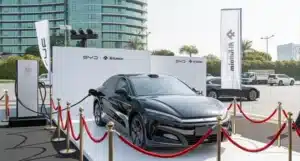
New research reveals that EV batteries can retain 90% capacity beyond 200,000 km, but experts stress following charging guidelines like limiting daily charge to 80% and avoiding excessive fast charging to maximise battery lifespan and performance.
Several recent studies have demonstrated that electric vehicle (EV) batteries are considerably more durable than initially expected, even with everyday use that may not always follow ideal practices. Early in the evolution of EV technology, concerns were common regarding the longevity of traction batteries. However, real-world data and testing have considerably eased these apprehensions, showing batteries can last well beyond 200,000 kilometres while retaining around 90 percent of their original capacity. This resilience is crucial, as the battery remains the most valuable component of an electric car and directly influences its resale value.
Despite this improved outlook, experts emphasise that EV owners should not treat battery care as a free pass but should adhere to certain guidelines to maximise lifespan—most notably surrounding charging habits. The German technical inspection association GTÜ has outlined seven key recommendations, many of which align with broader industry advice on maintaining battery health.
Firstly, charging the battery to just 80 percent daily suffices for most practical needs and helps avoid the electrochemical stress that full 100 percent charges can induce. Similarly, keeping the battery above 20 percent prevents deep discharges that also strain cells. Many modern EVs facilitate this approach by allowing users to set charging limits through onboard systems or smartphone apps, automatically stopping charging when the target is reached.
That said, the 80 percent guideline is flexible. For long journeys or extreme weather conditions, fully charging the battery may be more efficient, particularly when combined with pre-conditioning features that optimise battery and cabin temperatures while the vehicle is still plugged in.
Fast charging, commonly via direct current (DC), while convenient, puts more heat and stress on the battery than slower alternating current (AC) charging. Experts recommend limiting DC fast charging to occasional use, ideally reserving it for travel or emergencies, while relying on slower wall-box charging for everyday needs. Vehicle technologies now help protect batteries by moderating charging speed and temperature during fast charging sessions.
Another practical tip is to make effective use of regenerative braking, which captures energy during deceleration and feeds it back into the battery. This process imposes minimal stress and improves overall energy efficiency, especially in urban stop-and-go traffic where up to 30 percent of driving energy can be recovered. Many EVs allow drivers to adjust the intensity of regenerative braking, supporting different driving styles and sometimes offering “one-pedal” driving modes.
Battery care also extends to periods when the car is not in use. Leaving an EV parked for weeks with a battery either fully charged or completely depleted can accelerate wear. The recommended state of charge for extended idle times is between 50 and 70 percent, balancing readiness and reducing cell stress.
In addition to charging management, other factors contribute to battery health. Avoiding extreme temperatures is important: very high heat accelerates battery degradation, while very low temperatures can reduce driving range and potentially harm battery capacity if the battery is charged while cold. Some advice includes parking in sheltered areas during winter and avoiding charging from a completely cold battery state.
Overall, adhering to these strategies—moderate charge limits, restrained use of fast charging, effective regeneration, and temperature management—can substantially extend an EV battery’s usable life. For those buying or selling used electric vehicles, objective battery health assessments are invaluable tools. Companies offering these services, sometimes in cooperation with technical inspection organisations, provide transparency regarding battery condition, fostering confidence in the EV market.
As EV adoption grows, spreading awareness of these best practices will help drivers preserve their investment, supporting both performance and sustainability in the shift to electric mobility.











